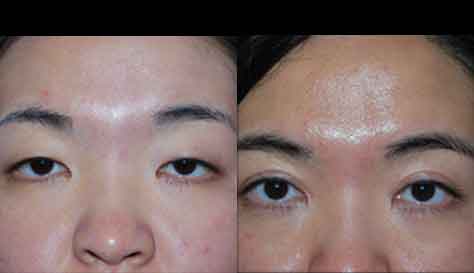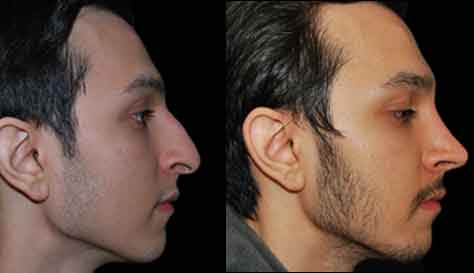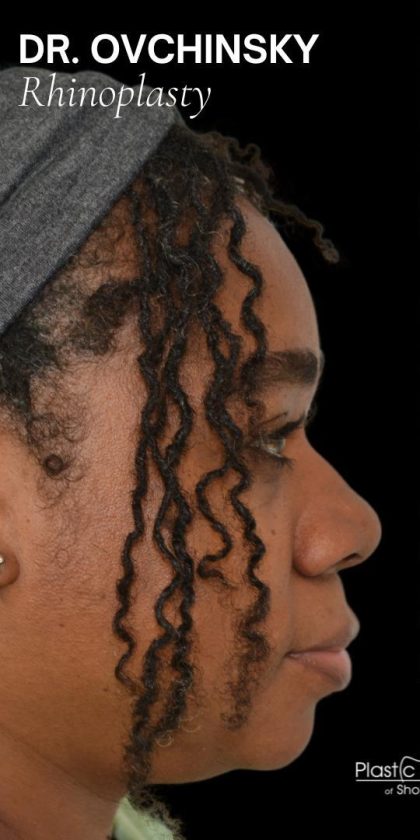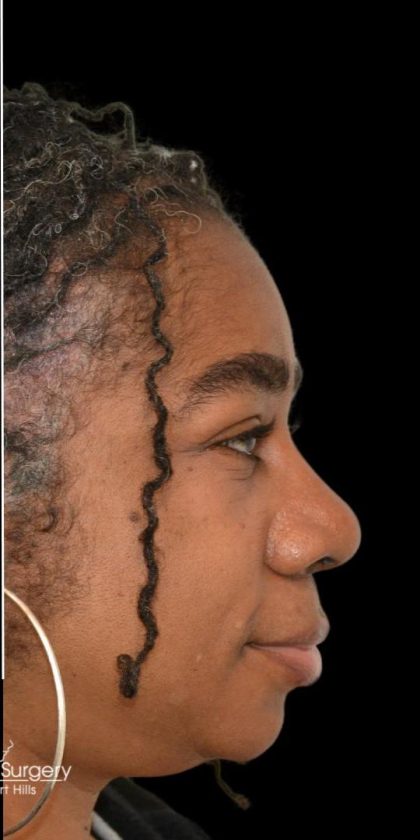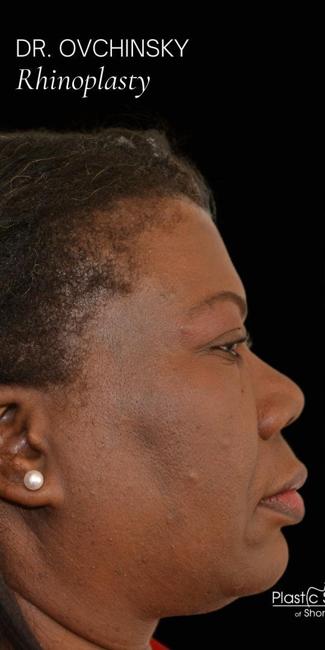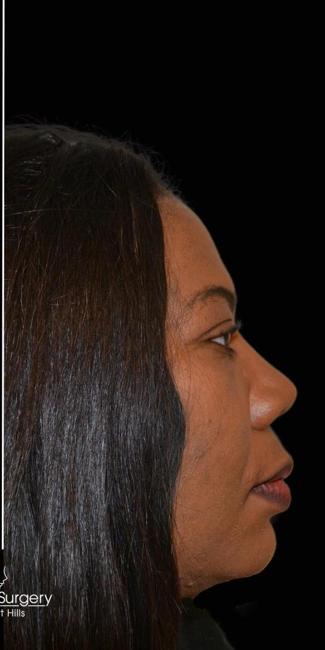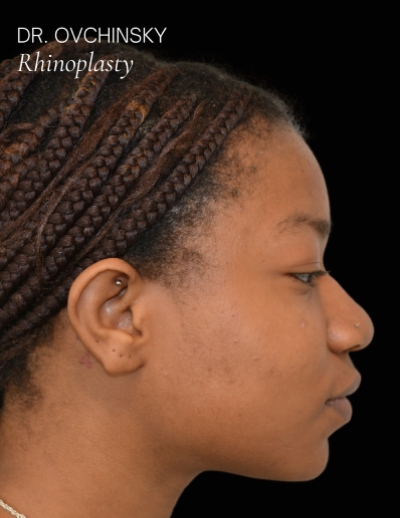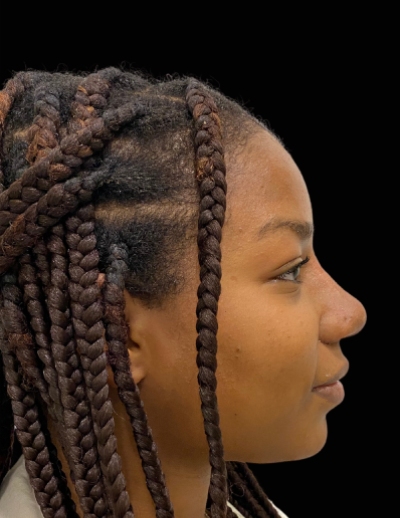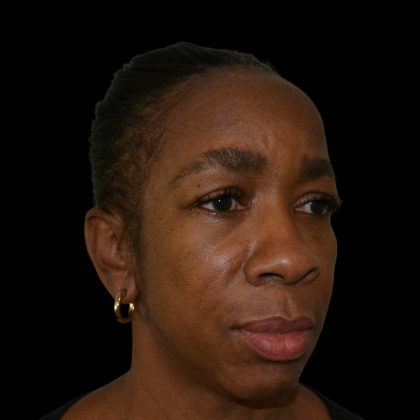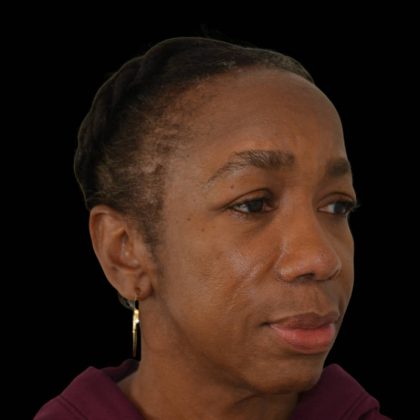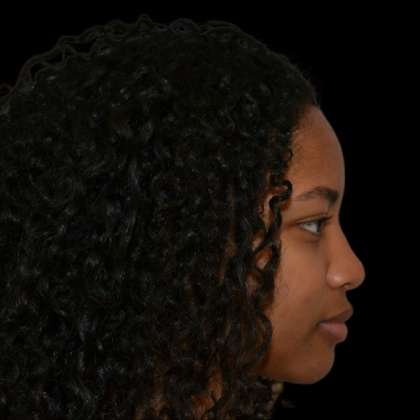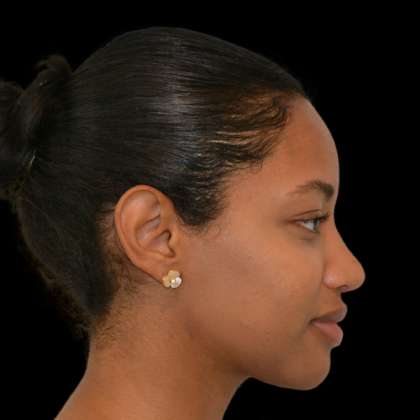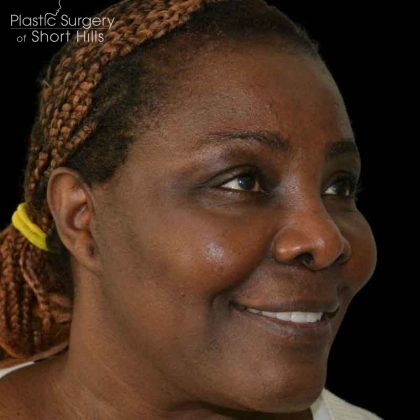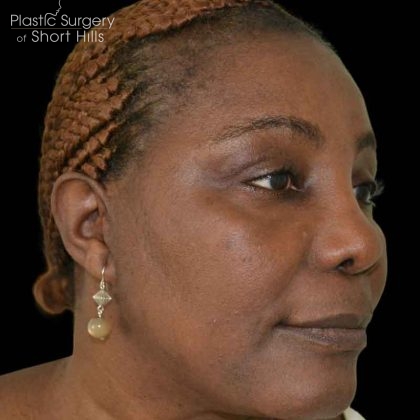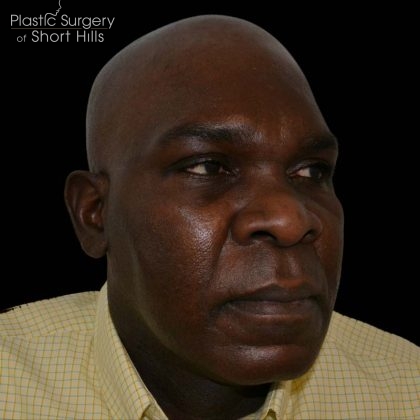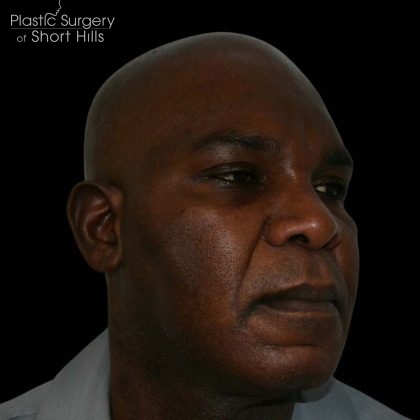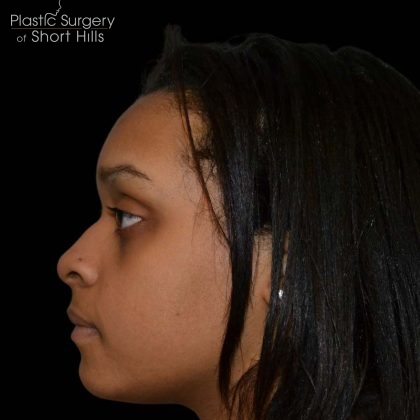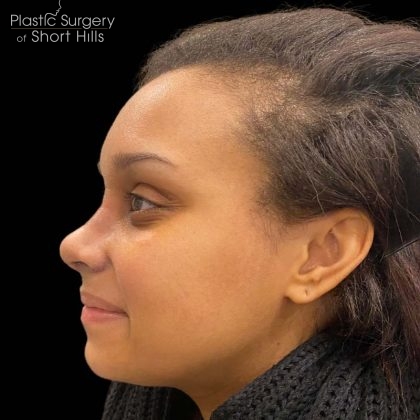Ethnic Rhinoplasty
Conveniently located to serve the areas of New Jersey and New York
Dr. Ovchinsky is a nationally recognized expert in Rhinoplasty. For more information about this procedure please view our Rhinoplasty page.
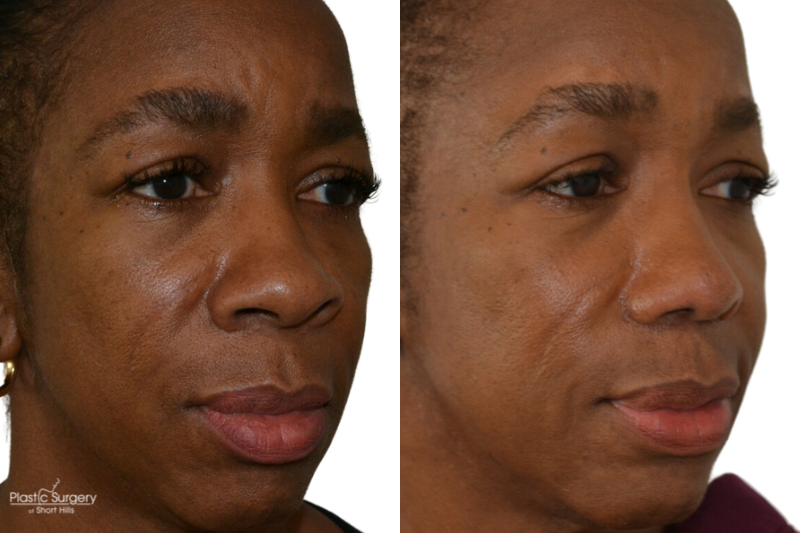
Ethnic rhinoplasty is a nasal surgery that takes into consideration ethnicity when shaping and altering a patient’s nose. Rhinoplasty, or a “nose job,” typically shifts and slims the dorsum to create a more “Westernized” nasal structure. (1) It goes without saying that there are vast differences in nasal anatomy among patients of various ethnicities. These differences in anatomy as well as patients’ views of an “ideal” nose dictate different ethnic rhinoplasty approaches and techniques.
At Plastic Surgery of Short Hills, Dr. Alexander Ovchinsky is a double board-certified surgeon who specializes in facial plastic and reconstructive surgery. With a special interest and expertise in rhinoplasty, he personalizes each patient’s treatment plan to meet their needs.
Contents
Before and After Photos
Call for a consultation in our office and have an opportunity to create the nose you have always dreamed of!
Call our New Jersey location at (973) 379-0101 or contact us in Brooklyn at (718) 646-1234 to schedule an appointment.
@therhinoplastyguy Ethnic rhinoplasty transformation 🙌 I adressed her alar flaring and widened nasal base creating a more narrow slopey shape while still maintaing her natural look! #rhinoplasty #transformation #beforeandafter ♬ original sound – Ian Asher
What is Ethnic Rhinoplasty?
What makes the art of rhinoplasty challenging and at the same time exciting is the fact that no two noses are the same. Every nose has its own intricacies, nuances, and specifics the same way every patient has his or her own likes and dislikes. Ethnic rhinoplasty refers to rhinoplasty surgery performed on patients of ethnicity. In our busy rhinoplasty practice, we commonly see patients of various descents including, but not limited to:
- African American
- Latino/Hispanic
- Asian
- Mediterranean/ Middle Eastern
One large difference between traditional and ethnic rhinoplasties is the desired result. By considering certain ethnic features beforehand, Dr. Ovchinsky can create the nasal contour that you desire without negatively impacting your heritage and background. This helps preserve your identity while still enhancing your facial profile.
Why Undergo Ethnic Rhinoplasty?
Most ethnic rhinoplasty patients are looking to improve their noses but still preserve their ethnic identity. They typically do not want a fully Westernized look, but they do want an improved nasal appearance that is in harmony with the rest of their facial features. Rhinoplasty in ethnic patients often requires a different approach than in Caucasian patients. While individuals vary dramatically, there are some characteristics common to the different ethnicities that can make rhinoplasty more challenging and these must be addressed and taken into account in order to achieve an optimal result.
Such characteristics include:
- Thicker nasal skin (especially in African American noses)
- Weak tip cartilages (especially in African American noses)
- Dorsal hump that needs removal (Hispanic and Middle Eastern noses)
- Low flat dorsum that needs raising and definition (African American and Asian noses)
- Narrowing a wide appearance or broad base (African American and Asian noses)
- Improving large or flared nostrils (African American noses)
- Adding more definition to a bulbous tip
- Raising a drooping tip
Benefits of Ethnic Rhinoplasty
Ethnic rhinoplasty benefits patients by:
- Correcting cosmetic and functional concerns
- Opening airways for easier breathing
- Preserving nose uniqueness while improving facial balance
- Honoring ethnic beauty standards and non-western perspectives
- Providing natural-looking results that still reflect ethnic features
- Increasing self-confidence
The Dr. Ovchinsky Difference
Dr. Ovchinsky tailors his surgical technique to an individual patient rather than using the same “run-of-the-mill” surgery on everybody. The technique he uses causes minimal pain, has natural results, and is long-lasting. The vast majority of patients are quite surprised afterward at how little discomfort they have and how quickly they return to normal activity. Most patients have minimal bruising. Finally, with his technique and attention to detail during skin closure, scars are typically minimal and are often difficult to see once they have fully matured.
Ideal Candidates
The ideal candidate is someone who dislikes their nasal contour but desires to preserve their specific ethnic characteristics. They should be in good health with no serious underlying medical conditions. It is important that they have a clear outlook on what their final contour should be, as well as a willingness to portray their cosmetic desires to Dr. Ovchinsky. Candidates should also have reasonable expectations before surgery. Those who smoke tobacco and nicotine must quit for at least 1 month before and after the procedure as these products can negatively affect results.
Personal Consultation with Dr. Ovchinsky

When you meet with Dr. Ovchinsky privately, he will assess your candidacy by performing a physical examination of the nose, which may also include nasal endoscopy. After he determines your eligibility for ethnic rhinoplasty, he will explain the procedure in detail and ask you questions about your preferences. Your photos will be taken and Dr. Ovchinsky will simulate your projected surgical result. He will then create a customized procedure plan that meets your goals, then provide you with preoperative instructions. At the end of this consultation, a member of his staff will help you schedule your rhinoplasty procedure.
The private consultation is possibly the most important step of the process. Please be candid and straightforward about your cosmetic desires so Dr. Ovchinsky has all the necessary tools to create a contour you will love.
Preparation
You will have a preoperative appointment well in advance of your surgery when we will review all medications with you. If you are on “blood thinners,” you will be asked to stop them approximately one week prior to surgery. We also ask that you avoid certain over-the-counter medications. If you are taking herbal supplements, you should stop those as well as they may contain blood-thinning substances. You may continue taking most routine medications up until the morning of surgery with a small sip of water.
Before surgery, we encourage you to complete the following preparation:
- Schedule time off of work
- Make easy-to-prepare meals
- Prepare your home for a comfortable recovery
- Ask a friend or family member to drive you to and from your rhinoplasty
- Pick up new prescriptions from Dr. Ovchinsky
- Arrange for childcare and personal assistance during recovery
Ethnic Rhinoplasty Procedure
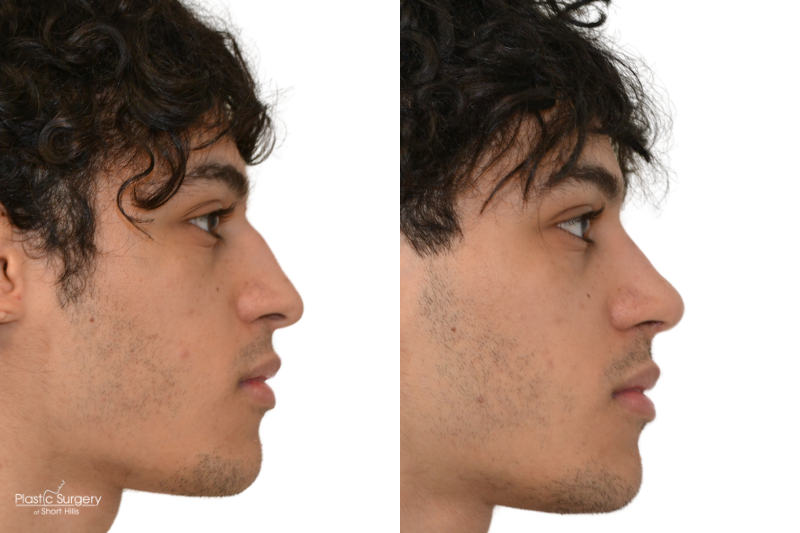
Dr. Ovchinsky performs ethnic rhinoplasty under general anesthesia so you will be asleep and comfortable throughout. He uses your detailed procedure plan to create the desired nasal contour. Depending on your ethnicity and characteristics, his rhinoplasty approach varies widely.
He performs either an “open” or “closed” technique. During an open rhinoplasty, he makes an incision along the bottom of the nasal tip and undermines the skin for clear visualization and room for more complex methods. A closed rhinoplasty requires internal incisions that the nostrils hide from view. (2) He decides which approach is best based on your goals, nasal shape, and characteristics, and which will lead to optimal results.
Recovery & Results
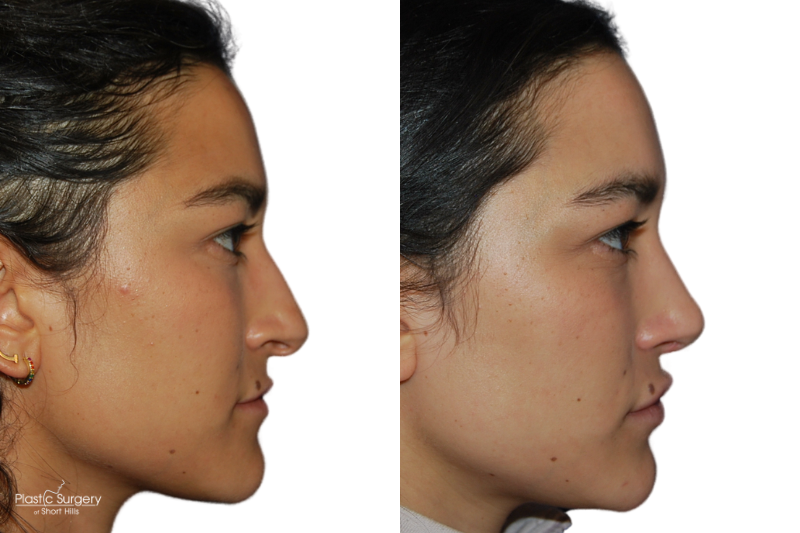
We take you to the recovery room where you rest for a few hours until you are fully recovered from anesthesia. Once you are stable, a family member or friend takes you home or back to your hotel. Stay relaxed for the first few days and keep your head elevated when in bed to help with faster resolution of swelling.
You should begin to start walking, eating, and using the restroom the day after surgery. Activity can slowly increase each day but it will take up to 2 weeks before you start to feel like your old self again. You should avoid any strenuous activity for 4 weeks.
Typically, patients see the difference right away, and more so once the swelling goes down within the first one to two weeks. As with any rhinoplasty procedure, it takes anywhere from 6 to 12 months to see the final nasal contour.
How Much Does Ethnic Rhinoplasty Cost in New Jersey?
The price of your ethnic rhinoplasty is completely dependent upon your desired results, current nasal contour, and the chosen surgical technique. Dr. Ovchinsky explains costs of surgery during your private consultation at Plastic Surgery of Short Hills. Schedule an appointment today by filling out this contact form or calling your nearest location at:
(973) 379-0101: Short Hills, NJ
(718) 646-1234: Brooklyn, NY
FAQ
Are there dietary restrictions after ethnic rhinoplasty?
No. Patients can eat whatever they want. Advance your diet from liquids (fruit juice, milkshake, etc.) to soft food (pudding, macaroni and cheese, mashed potatoes and gravy, oatmeal, pasta) to solids as tolerated. To prevent dehydration, please drink as much juice and nutritional fluid as possible.
Will I need to take pain medications after this procedure?
You will need to take medication prescribed to you by your surgeon. These usually include antibiotics, pain medicine, antibiotic ointment for the incisions, saline nasal spray, and occasionally anti-nausea medications.
How long is the recovery time for ethnic rhinoplasty?
Patients typically take 7 to 10 days off of work to recover from rhinoplasty procedures. In all, it can take up to a year or longer for the nose to completely heal.
What is the biggest difference between non-ethnic rhinoplasty and ethnic nose jobs?
One of the biggest hurdles and differences between westernized rhinoplasty and ethnic rhinoplasty is the structural variation found in ethnic noses. Your surgeon closely assesses your nose and cosmetic desires to create the right procedure plan for you.
References
- Lao WWK, Hsieh TY, Ramirez AE. Differences and Similarities Between Eastern and Western Rhinoplasty. Annals of Plastic Surgery. 2020;86(3S):S259-S264. doi:https://doi.org/10.1097/sap.0000000000002617
- Raggio BS, Asaria J. Open Rhinoplasty. PubMed. Published 2021. Accessed May 8, 2024. https://www.ncbi.nlm.nih.gov/books/NBK546628/




